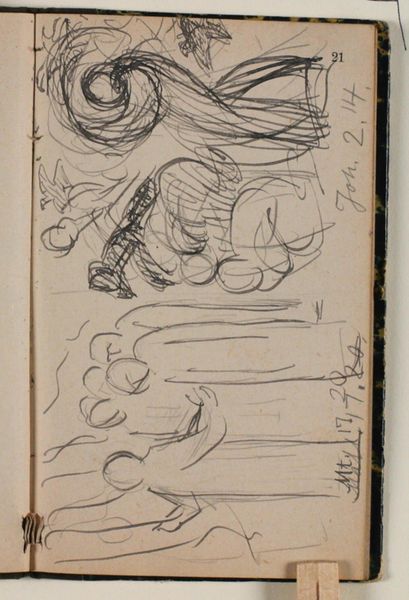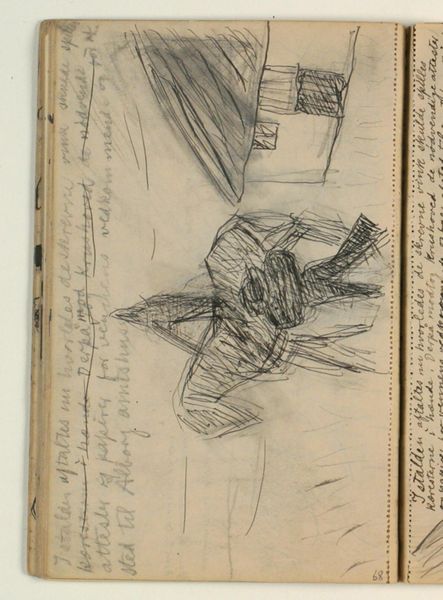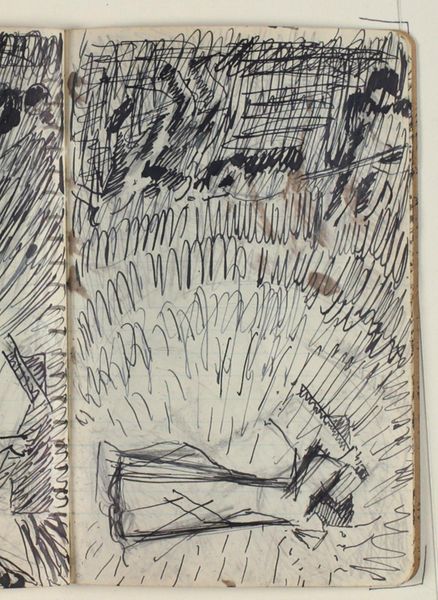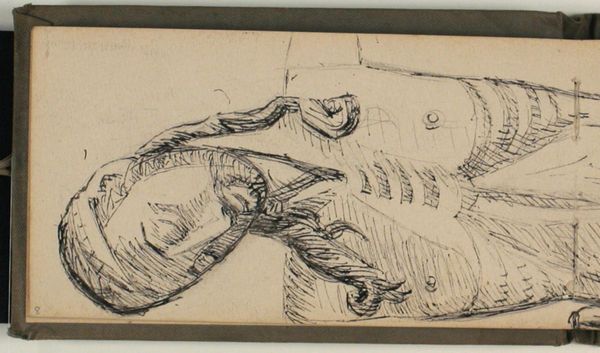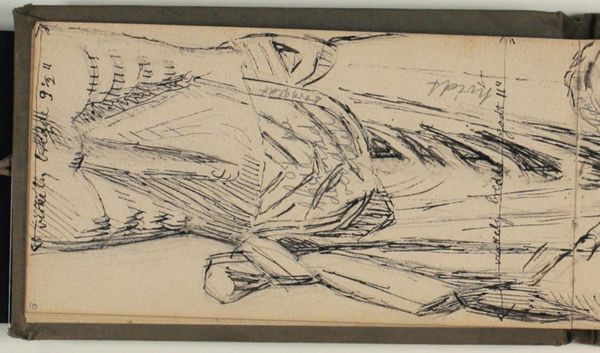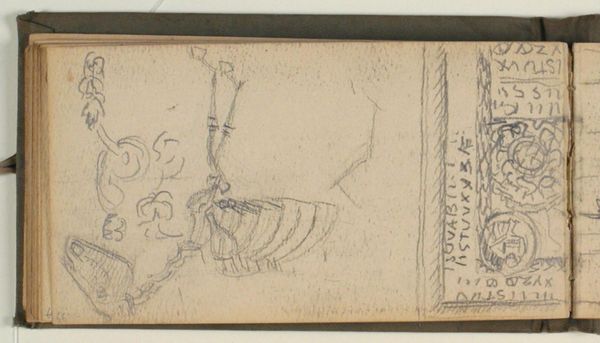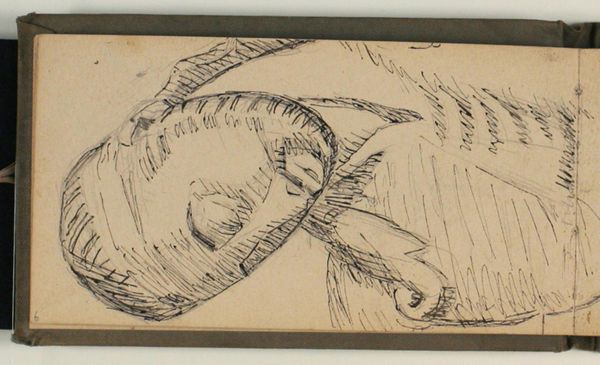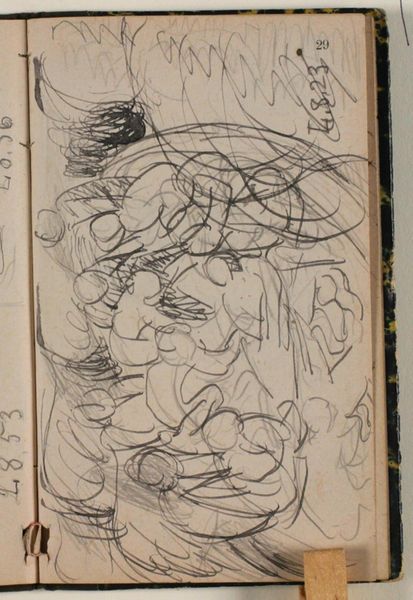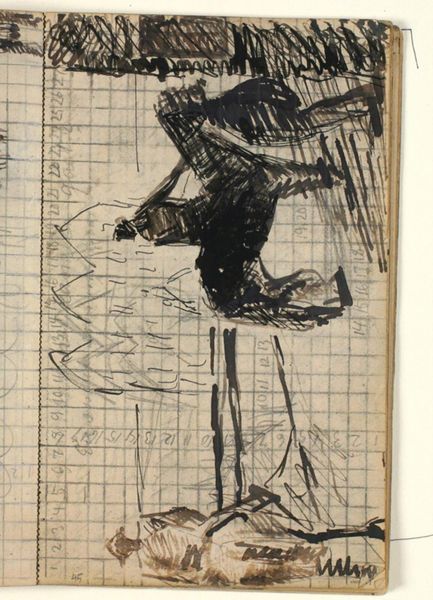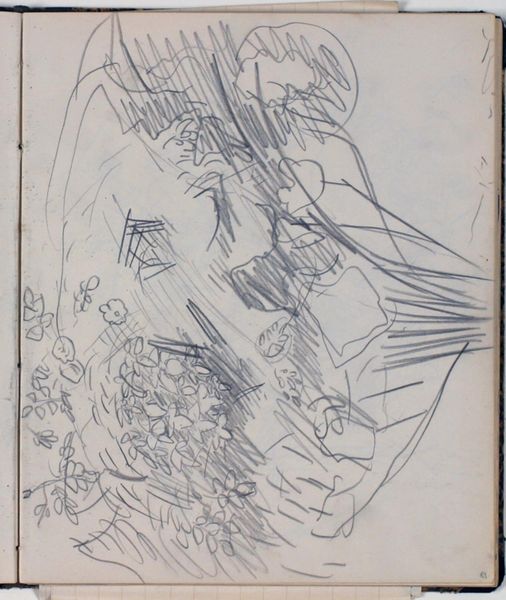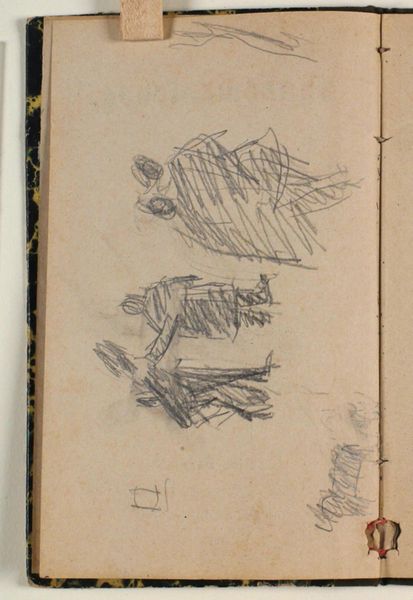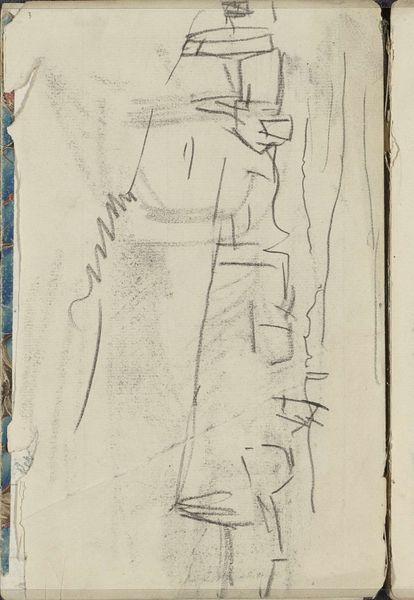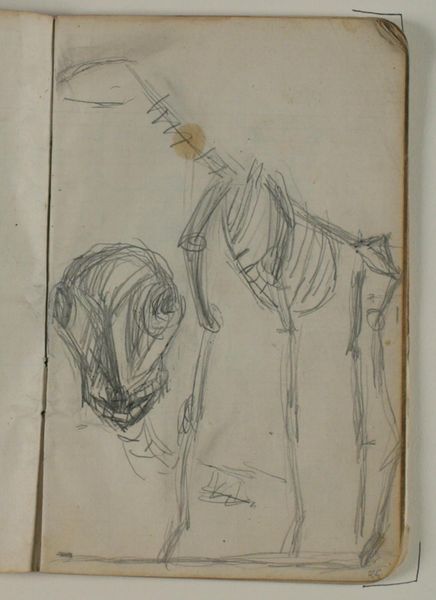
Kompositionsudkast til Blichers novelle "Bettefanden", p. 131 - Krushoved og forvalteren, Afskrift fra samme, l. 14-16 1932 - 1935
0:00
0:00
drawing, paper, ink, charcoal
#
drawing
#
narrative-art
#
figuration
#
paper
#
ink
#
charcoal
Curator: Looking at this Niels Larsen Stevns drawing from the period of 1932 to 1935, we see "Kompositionsudkast til Blichers novelle 'Bettefanden', p. 131 - Krushoved og forvalteren, Afskrift fra samme, l. 14-16," housed here at the SMK. Editor: My first impression is that of urgency. The medium, a combination of ink and charcoal on paper, gives it a very raw, almost frantic feel. It reminds me of rapid documentation, almost forensic in its approach. Curator: It’s a sketch, indeed. It seems Stevns was exploring visual ideas for illustrating Steen Steensen Blicher’s novella "Bettefanden". He uses quite direct, unshaded lines. Editor: Right, and the marks made by the ink and charcoal, there's no attempt to conceal the means of its making. This wasn't for public display originally. It's like he's trying to capture fleeting impressions—the essence of character through gesture and posture, which gives an impression of immediacy. It emphasizes process over product. Curator: Yes, he is interested in exploring the scene and relationships using symbolic imagery. The setting of a lawyer's home and the social tensions depicted in Blicher’s writing become visible through this planning sketch. This sketch really brings a vivid understanding to how social commentary was integrated within narrative drawing at the time. Editor: What's interesting is the economy of materials. Limited ink and paper resources imply that efficiency and raw talent would take center stage. These rapid drawings allowed him to capture gesture and posture of powerful social forces while revealing much about working methods of illustrators back then. The making of the image seems to represent a crucial role and its consumption is as illustrative as what Stevns conveys within the marks themselves. Curator: I concur, it's a wonderful peek into the development of visual narratives. I think, observing it, it is a very worthwhile reflection on art production’s intimate process. Editor: And for me, I am fascinated by this object due to how transparently it highlights the working methods and materials available during that time.
Comments
No comments
Be the first to comment and join the conversation on the ultimate creative platform.
